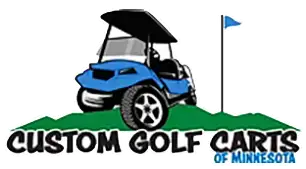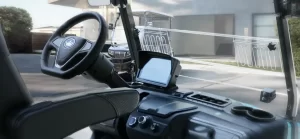Street legal golf carts are not the same as the ones you drive on a golf course. A basic golf cart is built for short trips on private property. To be used on public streets, it has to meet safety standards. When a golf cart is upgraded and approved for road use, it is often called a low speed vehicle or LSV.
Golf Cart vs Low Speed Vehicle
A golf cart is designed to go about 15 to 20 miles per hour. A low speed vehicle is built to go faster. Federal rules in the United States say an LSV can travel up to 25 miles per hour. That is one of the biggest differences.
| Feature | Golf Cart | Low Speed Vehicle (LSV) |
|---|---|---|
| Top speed | 15–20 mph | Up to 25 mph |
| Road use | Private property or approved streets | Public streets with posted limits up to 35 mph |
| Safety features | Limited | Must meet federal safety standards |
| Registration | Not required | Required in most states |
| Insurance | Not always required | Almost always required |
What Makes a Golf Cart Street Legal
If you want to make your golf cart street legal, you need upgrades. Federal and state laws set the standard. Local cities may add extra rules.
Required Features for Street Legal Carts
| Requirement | Needed for Street Legal Use |
|---|---|
| Headlights | Yes |
| Taillights | Yes |
| Turn signals | Yes |
| Brake lights | Yes |
| Seat belts | Yes |
| Rearview mirrors | Yes |
| Parking brake | Yes |
| Windshield | Yes |
| VIN number | Yes |
| Insurance | Usually required |
| Registration | Required as LSV |
Once these features are installed and inspected, your golf cart may be classified as a low speed vehicle. That means you can drive it on public roads with speed limits of 35 miles per hour or less.
Street Legal Golf Carts vs Neighborhood Use
Some people confuse neighborhood-use carts with street legal LSVs. Neighborhoods may allow regular golf carts on side streets with local permits. But being truly street legal means your cart meets federal standards. That allows you to drive on any approved public road in your state, not just in a private community.
Golf Carts for Sale
If you are ready to buy a golf cart that is already street legal, you can skip the upgrades and go straight to shopping. Many dealers now sell golf carts that meet all low speed vehicle requirements. You can explore golf carts for sale here.
Insurance and Registration
To be fully street legal, your golf cart has to be insured like a normal car. Most states require liability coverage at a minimum. Registration also matters. An LSV needs a vehicle identification number and plates. That means a trip to your local DMV is usually part of the process.
FAQs about Street Legal Golf Carts
What is the difference between a golf cart and an LSV?
A golf cart is designed for private use at slower speeds. An LSV is built for public road use and meets federal safety standards.
Can a golf cart become street legal?
Yes. With upgrades like lights, seat belts, mirrors, and registration, a golf cart can be reclassified as an LSV.
What speed can a street legal golf cart go?
Street legal carts and LSVs can go up to 25 miles per hour.
Do I need insurance for a street legal golf cart?
Yes. Most states require liability insurance if your cart is registered as an LSV.
Where can I drive a street legal golf cart?
On public roads with posted speed limits of 35 miles per hour or less.
Do street legal golf carts need a license plate?
Yes. Once registered as an LSV, they must have a plate and registration like a small car.
Final Thoughts
Street legal golf carts are different from basic carts used on the course. They are upgraded to meet federal safety standards and classified as low speed vehicles. With the right equipment, registration, and insurance, you can drive them on city streets. If you want one ready to go, check out golf carts for sale.


